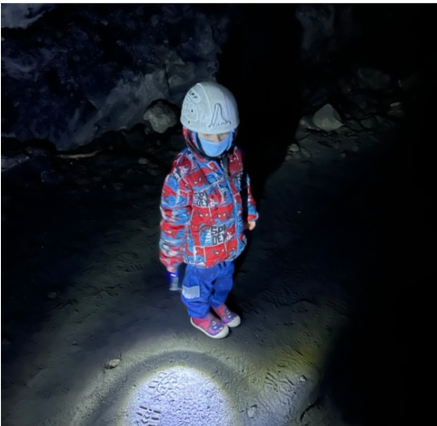Travels with Volcano Boy
Santa Barbara Grandpa and 4-Year-Old Grandson Go Volcano Hunting in Italy
At age 4, grandson Samson Oinam Peck delights in dinosaurs. He’s also a full-blown citizen of the Marvel superhero universe. But Sam’s current fascination is with volcanoes. He knows his caldera (a post-eruption hollow) from a hole in the ground, so it seemed time to trade at-home simulations using Mentos and diet soda for seeing the real deal in person.
Sam and his parents live in Chennai, in south India, and taking his fixation beyond YouTube videos would involve a family meet-up. His mom’s longstanding Green Card filing took Hawai’i off the table — ironically, just before Mauna Loa’s ongoing eruption surged into the news. Italy seemed promising, though, what with Vesuvius and Etna. Not to make light of volcanoes’ potentially fatal power, but we hoped Sam could sense their primal majesty.
In a potential augury, Mount Stromboli, the volcanic island off Sicily’s north coast, showed signs of erupting just as we arrived in Venice to start our journey. It’s still blowing its top, but Stromboli is isolated, so our pursuit would target Mount Etna, on the eastern side of Sicily, and Mount Vesuvius, on the mainland near Naples. After some setbacks, Sam’s quest would be realized at the volcanic aftermath of Pompeii.
Not Going with the Flow

Exploring a cave within Mount Etna | Credit: Rob Peck
Dressed in his new Spider-Man jacket, Sam offered a pre-visit tutorial on volcanic eruption. “Tectonic plates hit each other,” he explained, banging his hands together for emphasis. “The magma [molten subsurface rock] goes to the vent and — boom — bursts out to the surface,” he further exclaimed, waving his arms for emphasis.
Mount Etna is Europe’s largest and highest active volcano. Actually, it’s a continuously changing system whose five craters can spew lava bombs into the air during frequent eruptions. Our plan was to visit the base camp with a small guided tour, then move toward the summit via cable car and ATV.
Heading northward from the charming sea-level city of Catania, the partly cloudy sky provided a clear view of Etna rising 11,000 feet above us. It looked quiet, but black brick structures fashioned over centuries from lava stone bore witness to previous activity, including the explosion and earthquake that destroyed the city in 1693. The system’s most recent outflow happened just this May.
En route, Sam became an amateur spelunker, exploring a dark cave and its stalactites. But by the time we reached 6,300 feet and Etna’s Refugio Sapienza base camp, the weather had deteriorated into face-pounding sleet. The three Silvestri craters were obscured by gray mist, the cable car was closed, and renting ATVs to climb the slope seemed terminally masochistic. The adults settled for wine-tasting while Sam napped.
Our other cauldron — Vesuvius — proved similarly problematic. “We are going to the volcano!” Sam said excitedly as we reached Naples for our tour bus pickup. Driving the slope to a lookout included a satisfying view of the Bay of Naples — until the guide casually noted that the park and its path to the 4,300-foot top were closed due to a landslide. These volcanoes certainly are more than sleeping giants, a point punctuated by numerous burnt trees that had succumbed to a 2017 fire.
Ashes to Ashes

Volcano Sam, with one of Pompeii’s memorialized residents | Credit: Rob Peck
Pompeii saved Sam’s volcanic odyssey. Moving through once-buried but now pristine streets revealed a preserved culture: temples and forums, residences and bordellos. Sam’s “peak experience” came when we reached a case containing remains plaster-casted to capture the moment when a woman had succumbed to ash and heat nearly two millennia ago. Lying in state, arms forming a peaceful pillow, the display vivified how a volcanic big bang had suddenly cut short so many lives.
“The tectonic plates were sliding, and the volcano erupted. There was ash everywhere, and the ash went to Pompeii. The lady was hiding and she died from lava and ash,” Coroner Sam expounded back at our hotel, wearing a Hulk shirt while surrounded by his drawings of Pompeii, Etna, and Vesuvius. “An archeologist dug the Pompeii city out.”
It wouldn’t surprise me if an adult Volcano Sam returned to succeed that archeologist. Dig, he must.
Abe Peck lives in Santa Barbara but is a professor emeritus in service at the Medill School of Journalism/Northwestern University. He’s covered travel for Rolling Stone, Outside, Travel Weekly, and The Chicago Sun-Times.
Support the Santa Barbara Independent through a long-term or a single contribution.




You must be logged in to post a comment.